By Alessandra Ressa
Considered the most elegant Art Nouveau building in Trieste, the stunning Casa Bartoli in Piazza della Borsa, 7 is not only a marvel of architecture, but a source of curiosity for tourists and new residents who stroll through the sophisticated square that leads to the majestic Piazza Unità.
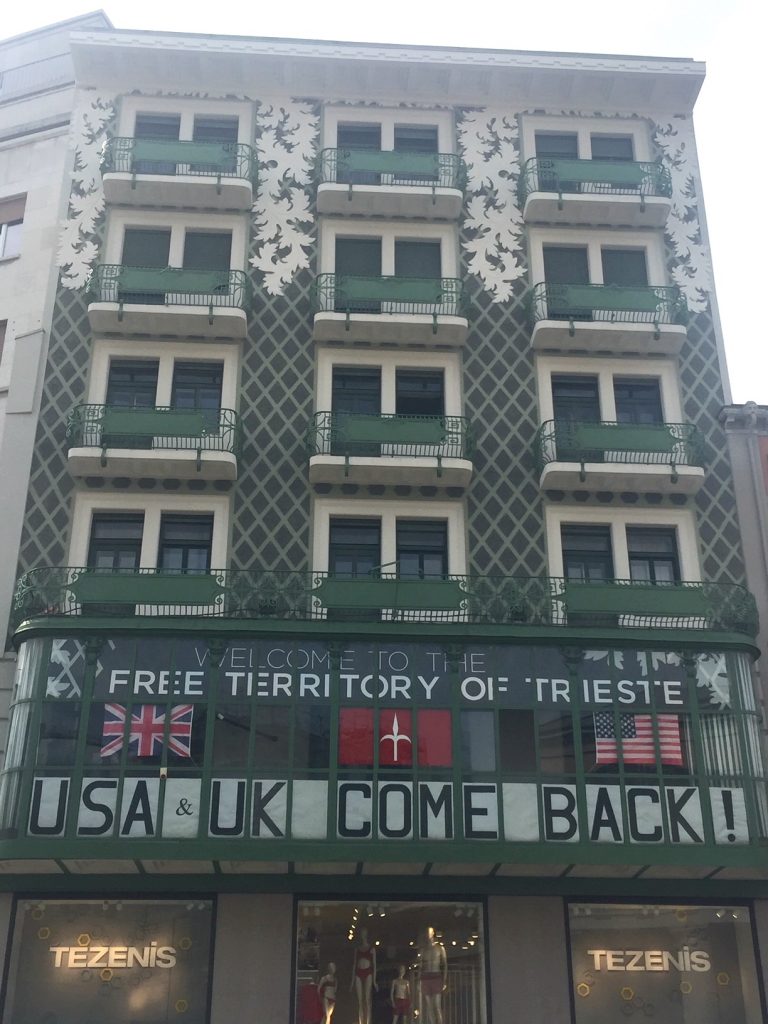
The reason for such peculiarity is the verandah on the first floor. It is impossible to miss the huge sign on it: Welcome to the Free Territory of Trieste, U.S.A. And U.K. Come back! The American, British and Trieste flag complete the flashy message.
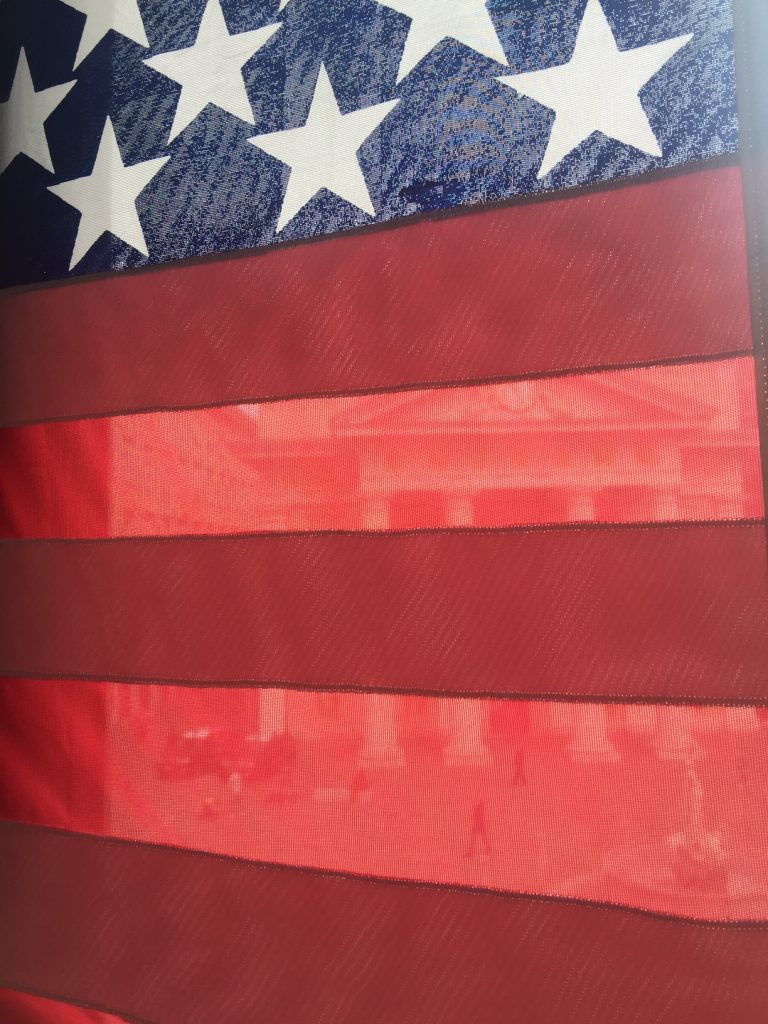
As unusual as the sign may look to the unfamiliar eye, when you ask locals what it is all about, they simply roll their eyes and move on. Casa Bartoli hosts a stubborn group of local independentists, whose annexed verandah is used as a billboard to promote the political fight.
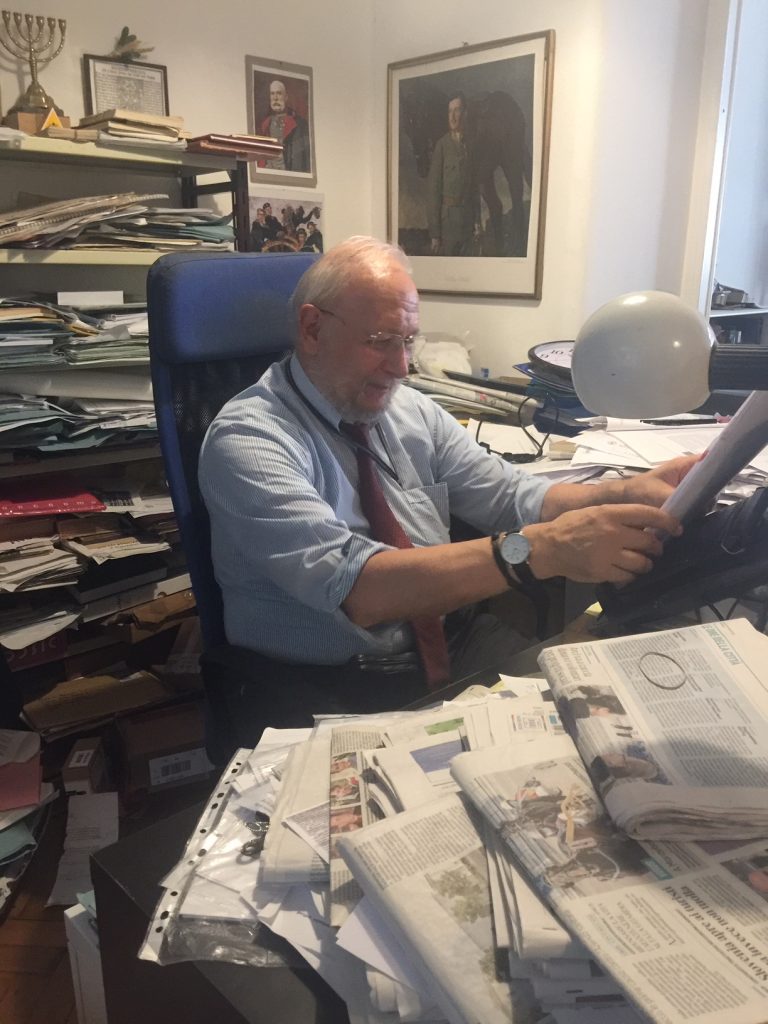
It is the headquarters of Free Trieste Movement. The same apartment also hosts the newsroom of La Voce di Trieste, a newspaper supporting the positions of the movement. Its director, the polyglot Paolo G. Parovel, writes about the history of Trieste and the struggle brought forward by the movement to “liberate” Trieste from Italy (and particularly from the Italian control of its port).
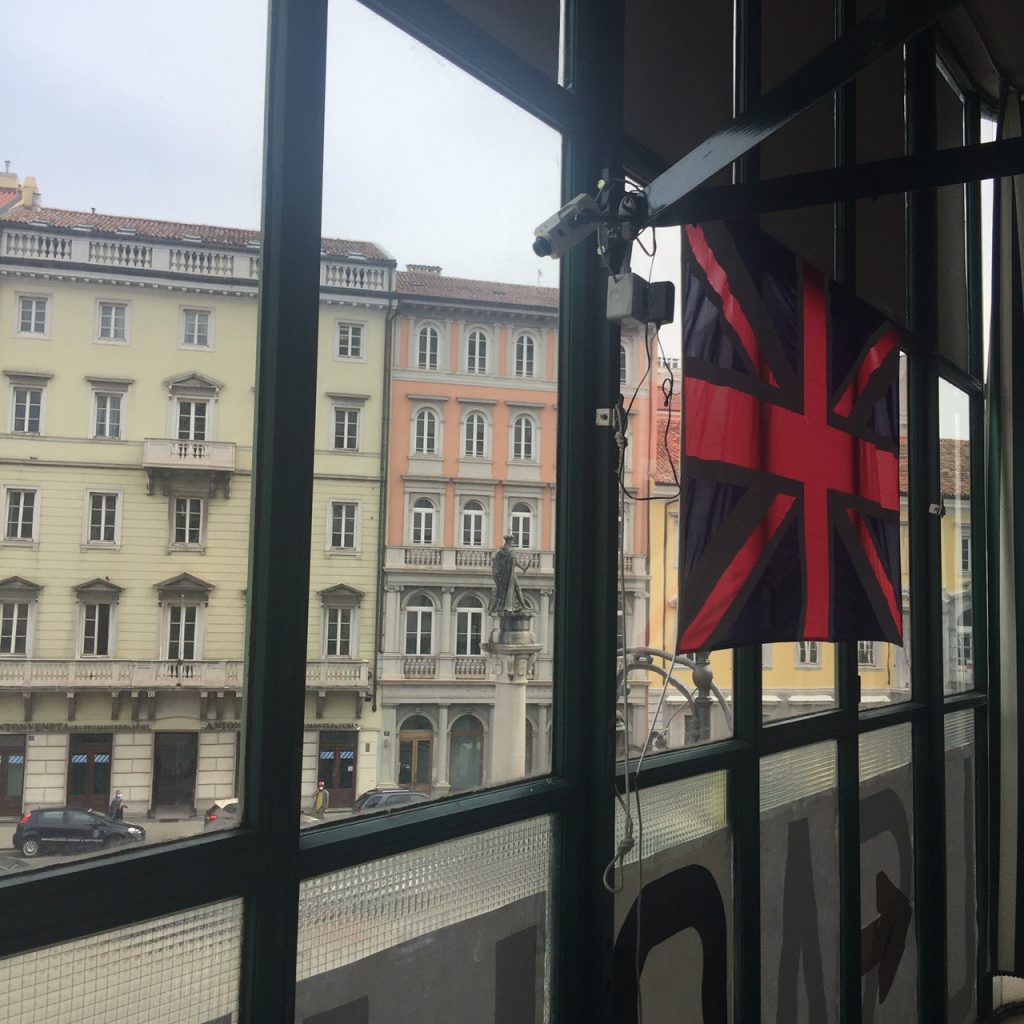
The claim is that Trieste, declared free territory after 1947 under the control of the American and British governments, has never formally been returned to Italy after the Allied forces left in 1954, and should therefore resume its regime of free port. The movement believes that there being no documents stating the opposite, Trieste should remain independent from the rest of Italy, thus enjoy a regime of tax exemption.
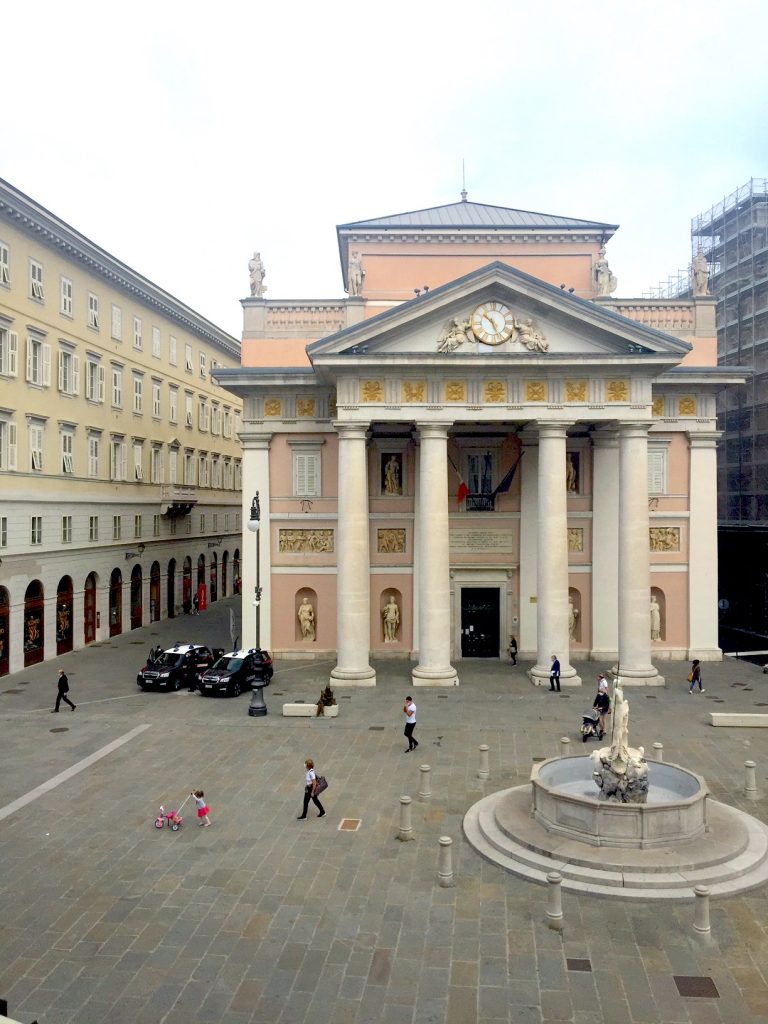
The verandah of the “green house” Casa Bartoli has not always been the focus of political struggles, and has seen many things during its long life. Facing the imposing old stock market bulding, today the home of the local chamber of commerce, Casa Bartoli was built in 1906 by Max Fabiani, renowed architect, designer of many astounding buildings in Trieste.
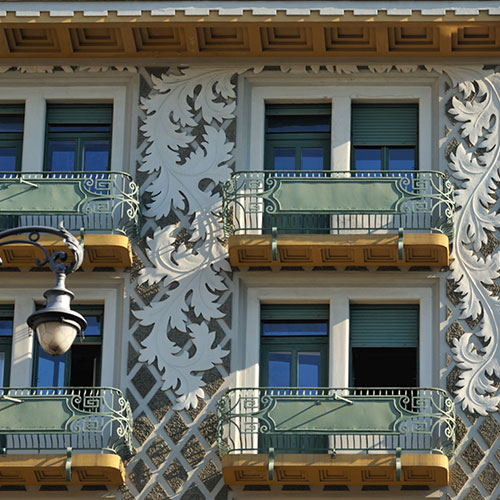
The geometric decorations counterbalanced by the leafy installations create a harmonious effect that donates the building extraordinary elegance.
The original entrance door to the building was positioned to the left of the facade. During the late 1930s the entrance was replaced by a shop and moved to a side wall where it is still today.
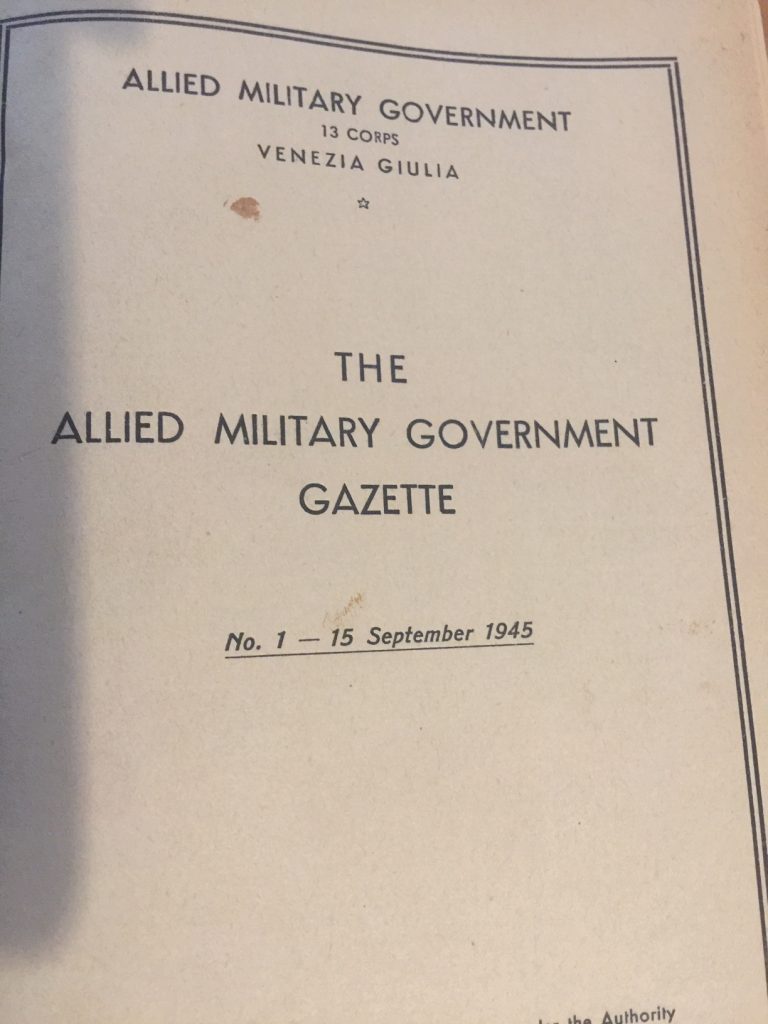
Casa Bartoli was built entirely of reinforced cement and stood in complete contrast to the medieval urban development of the Jewish settlements behind it.

Unlike many Liberty-style buildings in town, Casa Bartoli wasn’t only meant as private residence. Part of it was designed from the start for commercial use. The Antonio Bartoli & Figlio manufactoring stores were housed on the ground floor facing the street as well as several other successful businesses. The verandah with its rich detail in cast iron, was the winter garden of a very popular kosher restaurant, Restaurant Goldberger.
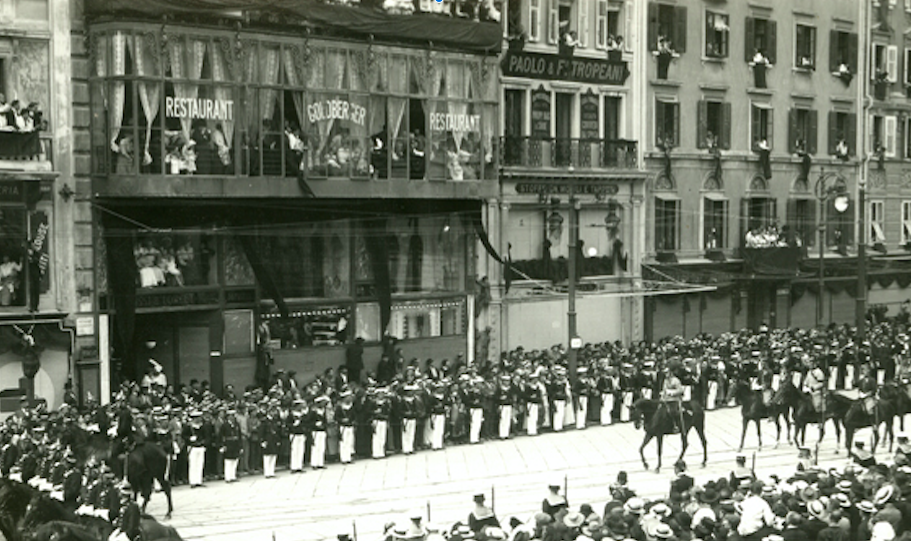
As the commercial area behind Piazza della Borsa was mostly owned by the large Jewish community of Trieste (there were also a Jewish school and a synagogue dating back to the 1700s), the kosher restaurant was a beloved spot especially during lunch break. You could sit and enjoy the beautiful view from its glassed walls.
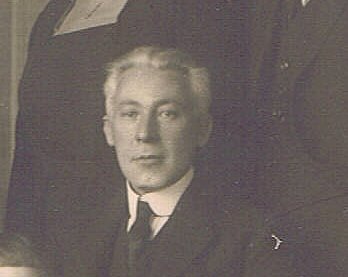
The owner, Armin Goldberger, was born in Budapest and moved to Trieste in 1907.
The restaurant was particularly popular for its flavors coming from the Jewish-Hungarian tradition. In 1914, Goldberger and his wife stood motionless, while the funeral procession of Franz Ferdinand of Austria and Countess Sophia, both murdered in Sarajevo, marched under the verandah of Casa Bartoli.
Between 1928 and 1937 the Italian Fascist regime demolished many historical buildings that were standing next to Casa Bartoli, including many Jewish owned businesses. They replaced the whole block with a thick fascist-style complex that for a time hosted the headquarters of the party.
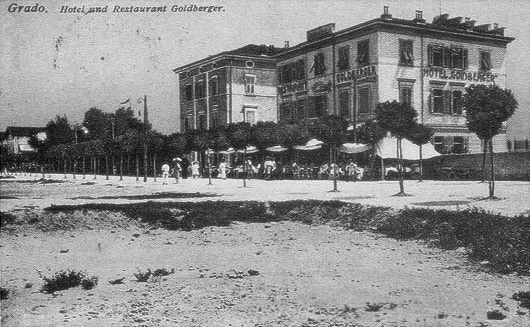
The political atmosphere forced Armin Goldberger and his family to move to Grado first, where they owned the Pensione Goldberger-Villa Riviera, and later to Prague, where he opened another kosher restaurant.
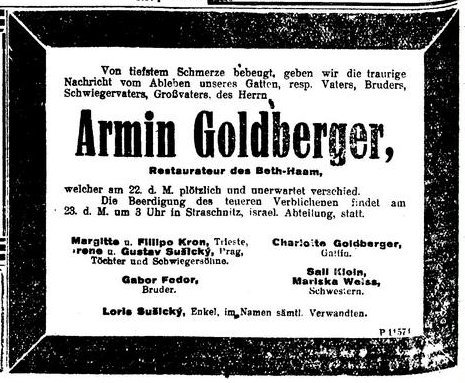
Armin died in 1933, just shortly before some members of his family, together with most of the Jewish community of Prague, were taken to Terezin concentration camp and later deported to Auschwiz. Few of the Goldbergers survived and managed to escape to Palestine. Their descendants still live in Israel today.
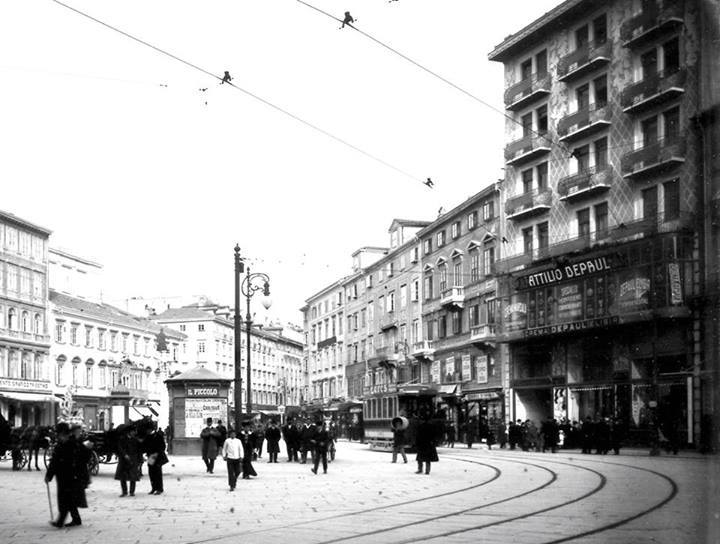
By 1938, after Mussolini announced the enforcement of racial laws in Italy from a giant stage in Piazza Unità in front of a huge cheering crowd, the Jewish quarter of Trieste was repeatedly attacked, its members assaulted, and its commercial businesses pillaged.
Many from the community seeked refuge abroad. Those who remained were later arrested, deported and killed. Most names of Jewish citizens in Trieste were reported to fascist and nazi authorities by non Jewish Triestini, in exchange for money or favors.
This climate of delation changed the unique, international personality of Trieste, transforming its jolly and culturally-rich Mitteleuropean atmosphere into a gloomy climate of mistrust and fear.





























Interesting Commentary on the Art nouveau Building, and the Free territory of Trieste. A very rich Cultural History. New Orleans is interesting also, with all it’s Problems, Grazie Lawrence Turner
Grazie! Ci ero passato avanti un paio di volte nei miei giri per Trieste chiedendomi sempre cosa fosse e adesso lo so 🙂